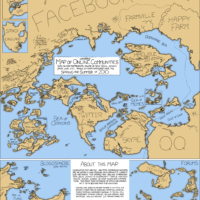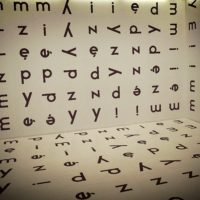What's the difference between a community and a network? Networks focus on getting, communities focus on giving. Check out this article from the Harvard Business Review on the importance of strong leadership in guiding community building, and the amazing things that can happen when a network transforms into a community. We're not sure these words are necessarily the right way to describe these behaviors, but they certainly exists within certain groups. The Creative Community Fellows cohort is chock-full of givers. Take a look back at this … [Read more...]
The Art of Attachment
The Knight Foundation recently shared the results of a 3 year study, "Soul of the Community" (SOTC) looking at what factors played a role in 'attaching' residents to their communities. This study focused on the definition of community as tied to a specific geographic location, investigating what make people love where they live. ArtPlace America also defines 'community' as inherently place-based in their 4 principles of successful creative placemaking: Define a community based in geography, such as a block, a … [Read more...]
Community development in the age of social media
Today, more than ever before, artists, individuals, and organizations are using social media to make connections and spark conversations with each other. Art even happens online. Community building does too, according to this article on The Guardian. From mobilizing communities to act to providing a space for conversation and connections, social media is increasingly being used to support and sustain communities, in-person and away from computer screens. Do you see crossover between your online, social sphere and in-person action? How can, or … [Read more...]
Near, Far, Wherever you are
Do communities have to be tied to geography? Locality? Your Youtube Cat Video Appreciation community might have something to say about that. Social media allows us to connect with people from geographic communities both near and far. Distance is no longer a barrier to people who have common interests, passions, or projects! Explore the wide, wild world of online communities through this fun, interactive map from XKCD. … [Read more...]
Choosing the path
Over on her ArtsJournal blog, Jumper, Diane Ragsdale examines the means versus ends issue discussed by Lyz Crane in our last blog post. The question of whether the arts can truly contribute to community building is still widely debated. She concludes that the path between the two does not have to split, and that arts organizations have long worked to use arts and culture to bring people together. What are your thoughts? … [Read more...]
Arts as Ends, Means, and Everything In Between
ArtPlace America, "works to position arts and culture as a core sector of comprehensive community planning and development." In this article, Lyz Crane, Deputy Director of ArtPlace America, dives into the field of arts-based community development - from the practitioner and researcher point of view. She showcases how many stakeholders can work together to create sustainable communities and reflects on the different terms we use to talk about community, the arts and community development: culture-based development, artist space development, … [Read more...]
Why the arts?
How do the arts fit into the many definitions of community? Creative Community Fellows alumna, Director of Art in Praxis and Interim Director of the Bromo Arts District, Jess Solomon shares her perspective in conversation with Marty Pottenger, artist and director of Art at Work. Both artists reflect on the increase of artists who work within communities, and on the unique role that art can play in strengthening and supporting communities: "Art has always been used to make things better, to inspire people, to bring people together. But … [Read more...]
An invitation
Like people, communities are complex. Communities are not only defined by location, but also by human relationships and needs. In "A Model of Identity and Community", David Pollard shares consultant Aaron Williamson's definition of the four essential elements to a community: he states that communities are groups of people who come together based on shared intent, identity, interest, and experience/capacities. Pollard also addresses the challenges of building community. Communities, he states, self-organize. Nobody can create a community, … [Read more...]
Communities, Complexities and Commonalities
What does community mean to you? What are the most important aspects of a community? In this Stanford Social Innovation Review article, David Chavis and Kien Lee discuss many of the elements that are key to community: location, meeting common needs, a sense of safety and belonging, and a shared history. They also point out the complex nature of communities: "When a funder or evaluator looks at a neighborhood, they often struggle with its boundaries, as if streets can bind social relationships. Often they see a neighborhood as the … [Read more...]
Language Matters
Once a year, NAS gathers 24 creative changemakers from all over the nation for a week-long residential program called Creative Community House. We spend this week living and learning alongside each other, sharing ideas and experiences and chewing on new information presented by NAS and our partners. And we also debate with each other. A lot. One of the most enlightening debates we had at last year’s Creative Community House was around language. The words some brought into conversations in hopes that they would offer clarity ended up … [Read more...]
Growing the Pie Together: Fostering Giving Networks in the Arts
Over the past nine months, I’ve witnessed something truly remarkable take shape: a network of committed givers in the arts. Not a network that operates on a tit-for-tat basis, not a group that invests in others with the goal of personal gain in the long run, but individuals who are just as dedicated to advancing each other’s work as they are to advancing their own. This network is the Creative Community Fellows cohort. If you’ve ever been involved in an arts network (or, heck, any job-focused affinity group) you know this is rare. The flow … [Read more...]











